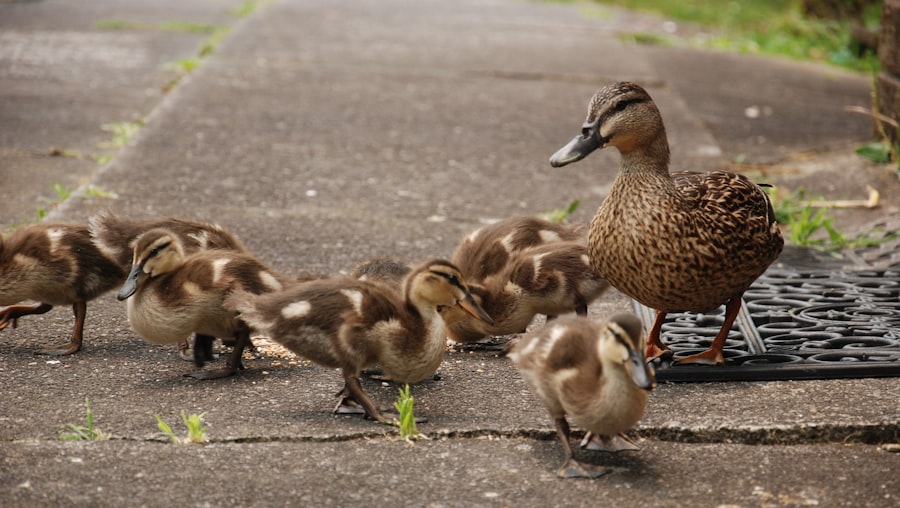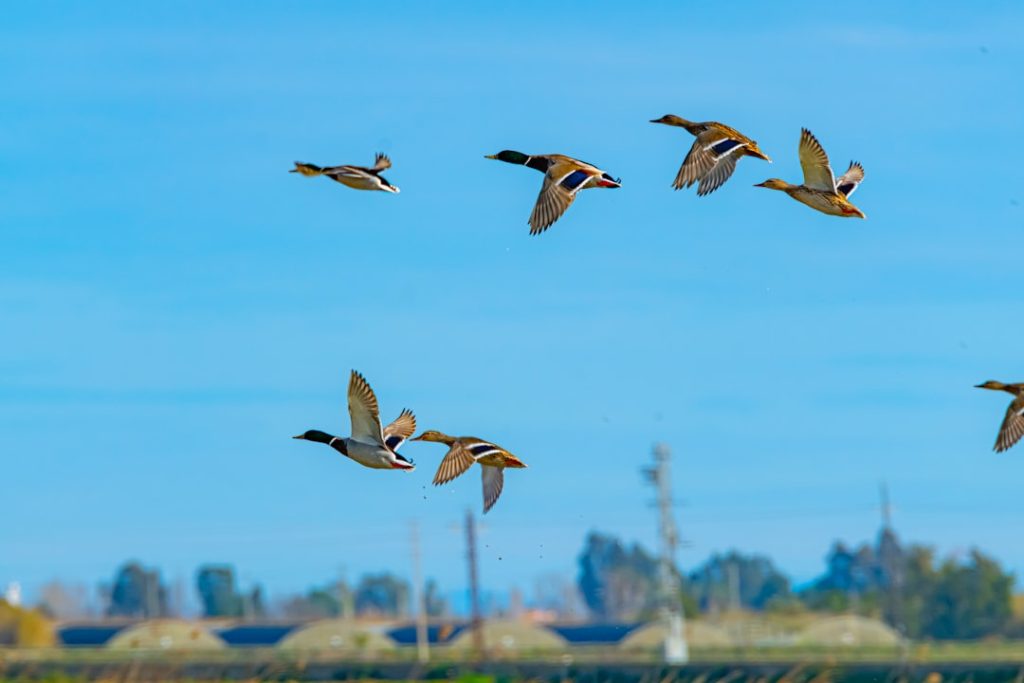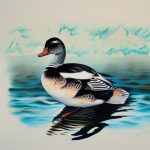Rare wild duck breeds are a fascinating and diverse group of waterfowl that are not commonly seen in the wild or in domestic settings. These unique and beautiful birds come in a variety of colors, patterns, and sizes, making them a popular choice for bird enthusiasts and conservationists alike. From the stunning Mandarin duck with its vibrant plumage to the elusive Baikal teal with its striking blue and green feathers, rare wild duck breeds capture the imagination and inspire awe in all who encounter them.
These rare wild duck breeds can be found in various habitats around the world, from the wetlands of Asia to the rivers of North America. Their natural beauty and graceful movements make them a joy to observe, and their presence in the wild is a testament to the importance of preserving biodiversity. As these rare wild duck breeds face increasing threats from habitat loss, pollution, and hunting, it is crucial for conservation efforts to be made to protect these magnificent birds for future generations to enjoy.
Table of Contents
Key Takeaways
- Rare wild duck breeds are an important part of our natural ecosystem and should be preserved for future generations.
- Characteristics of rare wild duck breeds include unique coloration, distinct markings, and specific habitat preferences.
- Conservation efforts for rare wild duck breeds include habitat protection, captive breeding programs, and public awareness campaigns.
- Threats to rare wild duck breeds include habitat loss, pollution, hunting, and invasive species.
- Preserving rare wild duck breeds is important for maintaining biodiversity, ecosystem balance, and genetic diversity within the species.
Characteristics of Rare Wild Duck Breeds
Rare wild duck breeds are known for their unique and striking characteristics that set them apart from more common duck species. One of the most notable features of these birds is their vibrant and eye-catching plumage, which often includes a wide range of colors and patterns. From the iridescent green and purple feathers of the Falcated duck to the intricate markings of the White-winged wood duck, rare wild duck breeds are a sight to behold.
In addition to their stunning appearance, rare wild duck breeds also exhibit a wide range of behaviors and adaptations that make them well-suited to their natural habitats. Many of these birds are skilled divers and swimmers, using their webbed feet and streamlined bodies to navigate through the water with ease. Some species, such as the Harlequin duck, are known for their impressive agility and speed, making them adept at evading predators and catching prey.
Overall, rare wild duck breeds are a diverse and fascinating group of birds that showcase the beauty and complexity of the natural world. Their unique characteristics make them a valuable asset to ecosystems around the world, and it is essential to protect and preserve these birds for future generations to appreciate.
Conservation Efforts for Rare Wild Duck Breeds
Conservation efforts for rare wild duck breeds are crucial for ensuring the survival of these magnificent birds in the face of increasing threats to their habitats and populations. Many organizations and individuals are working tirelessly to protect and preserve these birds through a variety of initiatives, including habitat restoration, captive breeding programs, and public education and outreach.
One of the most important aspects of conservation efforts for rare wild duck breeds is the protection and restoration of their natural habitats. Wetlands, rivers, and other waterways are essential for the survival of these birds, providing them with food, shelter, and breeding grounds. By working to conserve and restore these vital habitats, conservationists can help ensure that rare wild duck breeds have the resources they need to thrive.
Captive breeding programs also play a critical role in conservation efforts for rare wild duck breeds. By breeding these birds in controlled environments, conservationists can help bolster populations and reintroduce individuals into the wild. These programs also provide valuable opportunities for research and education, helping to raise awareness about the importance of preserving these birds and their habitats.
Public education and outreach are also essential components of conservation efforts for rare wild duck breeds. By raising awareness about the threats facing these birds and the importance of protecting them, conservationists can inspire others to take action and support efforts to preserve these magnificent birds for future generations.
Threats to Rare Wild Duck Breeds
Despite their beauty and resilience, rare wild duck breeds face a variety of threats that jeopardize their survival in the wild. Habitat loss and degradation are among the most significant challenges facing these birds, as wetlands, rivers, and other critical habitats are increasingly being destroyed or polluted by human activities. This loss of habitat not only reduces the available resources for rare wild duck breeds but also exposes them to greater risks from predators and other threats.
In addition to habitat loss, rare wild duck breeds are also threatened by pollution, climate change, and hunting. Pollution from agricultural runoff, industrial waste, and other sources can contaminate waterways and degrade the quality of habitats for these birds. Climate change is also impacting the availability of suitable habitats for rare wild duck breeds, as rising temperatures and changing weather patterns alter the landscapes they rely on for survival.
Hunting is another significant threat to rare wild duck breeds, as these birds are often targeted for their striking plumage or as game species. Unregulated hunting can decimate populations of rare wild duck breeds, putting additional pressure on already vulnerable populations.
Overall, these threats pose significant challenges to the survival of rare wild duck breeds, making it essential for conservation efforts to be made to protect these birds and their habitats.
Importance of Preserving Rare Wild Duck Breeds
The preservation of rare wild duck breeds is essential for maintaining healthy ecosystems and biodiversity around the world. These birds play important roles in their natural habitats, contributing to nutrient cycling, seed dispersal, and predator-prey dynamics. By protecting rare wild duck breeds, we can help ensure that these vital ecological functions continue to benefit ecosystems for generations to come.
In addition to their ecological importance, rare wild duck breeds also hold cultural significance for many people around the world. These birds have long been admired for their beauty and grace, inspiring art, literature, and traditions in many cultures. Preserving rare wild duck breeds allows us to maintain these cultural connections and ensure that future generations can continue to appreciate and learn from these magnificent birds.
Furthermore, rare wild duck breeds serve as indicators of environmental health, with declines in their populations often signaling broader issues within ecosystems. By monitoring the status of these birds and taking action to protect them, we can help address larger environmental challenges and promote the well-being of all species that share their habitats.
Overall, preserving rare wild duck breeds is essential for maintaining healthy ecosystems, cultural connections, and environmental awareness around the world.
Where to Find Rare Wild Duck Breeds

Rare wild duck breeds can be found in a variety of habitats around the world, each with its own unique species and characteristics. In North America, birdwatchers may encounter species such as the Wood duck, Harlequin duck, or Long-tailed duck in wetlands, rivers, and coastal areas. These birds are known for their striking plumage and impressive behaviors, making them a popular sight for bird enthusiasts.
In Asia, birdwatchers may have the opportunity to observe species such as the Mandarin duck, Baikal teal, or Falcated duck in wetlands, lakes, and rivers. These birds are renowned for their vibrant colors and graceful movements, drawing visitors from around the world to witness their beauty.
In Europe, birdwatchers may have the chance to see species such as the White-headed duck or Red-crested pochard in wetlands, marshes, and other waterways. These birds are known for their unique appearances and behaviors, making them a captivating sight for those who appreciate wildlife.
Overall, rare wild duck breeds can be found in a variety of locations around the world, offering opportunities for birdwatchers and conservationists to observe and appreciate these magnificent birds in their natural habitats.
How to Support Rare Wild Duck Breeds
There are several ways that individuals can support rare wild duck breeds and contribute to conservation efforts aimed at protecting these magnificent birds. One of the most important ways to support rare wild duck breeds is by advocating for habitat conservation and restoration. By supporting initiatives that protect wetlands, rivers, and other critical habitats for these birds, individuals can help ensure that rare wild duck breeds have the resources they need to thrive.
Another important way to support rare wild duck breeds is by participating in citizen science programs that monitor bird populations and contribute valuable data to conservation efforts. By reporting sightings of rare wild duck breeds and participating in surveys or monitoring programs, individuals can help researchers better understand the status of these birds and identify areas where conservation action is needed.
Supporting organizations that work to protect rare wild duck breeds through donations or volunteer work is also a valuable way to contribute to conservation efforts. Many organizations dedicated to bird conservation rely on support from individuals to fund research, habitat restoration projects, captive breeding programs, and public education initiatives aimed at protecting rare wild duck breeds.
Overall, there are many ways that individuals can support rare wild duck breeds and contribute to efforts aimed at preserving these magnificent birds for future generations to enjoy. By taking action to protect these birds and their habitats, we can help ensure that rare wild duck breeds continue to grace our world with their beauty and resilience.
If you’re fascinated by rare wild duck breeds, you might also be interested in learning about the unique breeding habits of guinea fowl. Check out this informative article on when guinea fowl lay eggs to discover more about these intriguing birds and their reproduction patterns.
FAQs
What are rare wild duck breeds?
Rare wild duck breeds are species of ducks that are not commonly found in the wild or in domestic settings. These breeds are often less common and may have unique characteristics that set them apart from more common duck breeds.
What are some examples of rare wild duck breeds?
Examples of rare wild duck breeds include the Baikal teal, the Falcated duck, the White-winged duck, the Madagascar pochard, and the Marbled teal. These breeds are not as widely known or seen as more common duck breeds such as the Mallard or the Pekin duck.
Why are rare wild duck breeds important?
Rare wild duck breeds are important for biodiversity and conservation efforts. By preserving and protecting these less common duck breeds, we can help maintain a healthy and diverse ecosystem. Additionally, rare wild duck breeds may have unique genetic traits that could be valuable for future breeding programs.
Where can rare wild duck breeds be found?
Rare wild duck breeds can be found in specific habitats and regions around the world. Some breeds may be native to certain countries or continents, while others may migrate to different areas during specific times of the year. Conservation organizations and wildlife reserves may also work to protect and preserve rare wild duck breeds in their natural habitats.
How can people help protect rare wild duck breeds?
People can help protect rare wild duck breeds by supporting conservation efforts, avoiding habitat destruction, and promoting responsible hunting practices. Additionally, raising awareness about the importance of preserving rare wild duck breeds and their habitats can help garner support for conservation initiatives.
Meet Walter, the feathered-friend fanatic of Florida! Nestled in the sunshine state, Walter struts through life with his feathered companions, clucking his way to happiness. With a coop that’s fancier than a five-star hotel, he’s the Don Juan of the chicken world. When he’s not teaching his hens to do the cha-cha, you’ll find him in a heated debate with his prized rooster, Sir Clucks-a-Lot. Walter’s poultry passion is no yolk; he’s the sunny-side-up guy you never knew you needed in your flock of friends!







